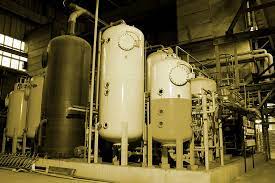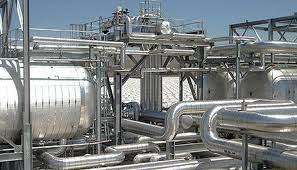Condensate Treatment
Condensate treatment refers to the process of treating and conditioning the condensate that is generated in various industrial systems. Condensate is the liquid that forms when steam or vapor condenses back into water after transferring heat in a heating or cooling process. It typically contains impurities such as dissolved solids, gases, and trace contaminants that need to be removed or controlled to ensure the efficient and safe operation of the system.



The treatment of condensate involves several steps and may vary depending on the specific application and the quality requirements of the treated condensate. Here are some common aspects of condensate treatment:
Condensate Recovery:
Condensate is often recovered and returned to the boiler or other water-heating systems to minimize water and energy losses. This can be achieved through the use of condensate recovery systems, which collect and transport the condensate back to the boiler.
Filtration:
Condensate is typically filtered to remove suspended solids and particulate matter. This helps prevent fouling and corrosion in downstream equipment and ensures the quality of the treated condensate.
Deaeration:
Condensate often contains dissolved gases, such as oxygen and carbon dioxide, which can cause corrosion and other operational issues. Deaeration processes, such as steam stripping or vacuum deaeration, are used to remove these gases and minimize the potential for corrosion.
Chemical Treatment:
Chemical additives may be employed to control corrosion, inhibit scale formation, and prevent microbiological growth in the condensate system. These additives can include oxygen scavengers, scale inhibitors, pH adjusters, and biocides, among others.
Monitoring and Control:
Regular monitoring of condensate quality, pH, conductivity, and other parameters is essential to ensure proper treatment and identify any deviations or issues. Control systems and automated dosing equipment may be employed to maintain optimal conditions.
Condensate Contamination Prevention:
To prevent contamination of condensate, it is essential to ensure proper system design, including adequate insulation, correct piping materials, and effective steam traps. Regular inspection and maintenance of steam traps and other system components help minimize leaks and prevent ingress of contaminants.
Compliance with Regulations:
Depending on the industry and location, there may be specific regulations and guidelines regarding condensate treatment and discharge. It is important to ensure compliance with these regulations to meet environmental standards and avoid penalties.
The specific condensate treatment requirements and techniques can vary depending on the industry and application. For example, condensate treatment in power plants may involve more advanced processes and technologies compared to smaller-scale applications like HVAC systems. Proper condensate treatment helps optimize system performance, improve energy efficiency, and extend the lifespan of equipment by minimizing corrosion and scale deposition.
Condensate treatment aims to maintain the quality of condensate, improve system efficiency, and protect equipment from corrosion and fouling. The specific treatment processes and techniques employed depend on the nature of the condensate, the industry, and the system requirements. Consulting with water treatment professionals or experts in the specific industry can provide further insights into optimal condensate treatment practices.

